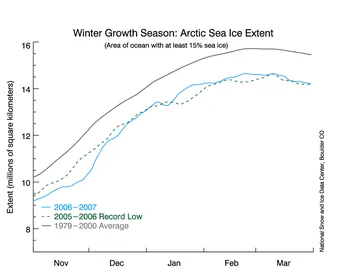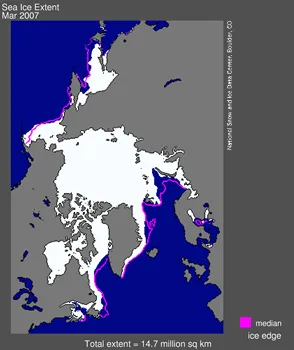NSIDC scientists announced that the winter 2007 Arctic sea ice maximum was the second-lowest in the satellite record, narrowly missing the March 2006 record (see Figure 1).
Sea ice extent, or the area of ocean that is covered by at least 15 percent ice, was 14.7 million square kilometers (5.7 million square miles) for March 2007, compared to 14.5 million square kilometers (5.6 million square miles) for March 2006, the current record (see Figure 2). The long-term monthly mean for March sea ice extent from 1979 to 2000 is 15.7 million square kilometers (6.1 million square miles).
Scientists monitor the sea ice year-round, paying special attention to extent during March and September. March usually marks the end of winter in the Arctic, a period when sea ice grows, or recovers, from the summer minimum. Low winter recovery means that the ice is freezing up later in the fall and growing at a slower pace in the winter. September usually marks the end of the summer melting season; low summer extent means that ice is melting faster during the summer and leaving less ice to build on during winter recovery.
NSIDC scientist Walt Meier said, "This year's low wintertime extent is another milestone in a strong downward trend. We're still seeing near-record lows and higher-than-normal temperatures. We expect the downward trend to continue in future years."

